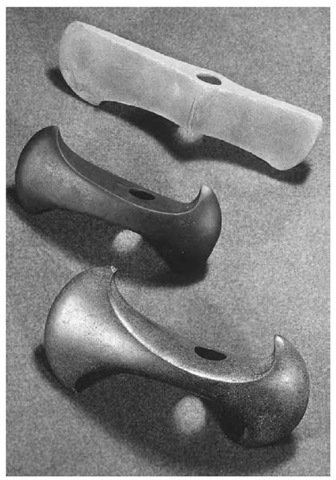

This culture would play an important role in the emergence of the Sintashta culture. On its southeastern fringes, the Balanovo culture had contributed to the formation of the Abashevo culture. The end of the Fatyanovo-Balanovo culture is estimated at between 2050 BC and 1900 BC. The Balanovo culture became the metallurgical heartland of the wider Fatyanovo horizon. Ceramic finds indicate Balanovo coexisted with the Volosovo people (mixed Balanovo-Volosovo sites), and also displaced them. Although being part of the Fatyanovo horizon, the Balanovo culture is quite distinct from it. The metallurgy-based Fatyanovo settlements in this area gave rise to the Balanovo culture around 2300 BC. They occupied the region of the Kama– Vyatka– Vetluga interfluves where metal resources (local copper sandstone deposits ) of the region were exploited. Spreading eastward down the Volga the Fatyanovo people discovered the copper ores of the western Ural foothills, and started long term settlements in lower Kama river region.

It disappeared when the Fatyanovo people pushed into the Upper and Middle Volga basin. The Volosovo culture of indigenous forest foragers was different from the Fatyanovo culture in its ceramics, economy, and mortuary practices. The Fatyanovo culture runs from Lake Pskov in the west to the middle Volga in the east, with its northern reach in the valley of the upper Volga.

Others have noted similarities between Fatyanovo and Catacomb culture stone battle-axes. Some have argued that this culture represents the acculturation of Pit-Comb Ware culture people of this area from contacts with Corded Ware agriculturists in the West. The theory of the Fatyanovo-Balanovo culture being an intrusive one is based upon the physical type of the population ( physical anthropology), flexed burial under barrows, the presence of battle-axes and ceramics. Unlike other cultures of the Corded Ware horizon, the Fatyanovo culture is found beyond to borders of the earlier Funnelbeaker culture. The Fatyanovo culture has been described as a "genuine folk movement" from Central Europe in the Russian forests. It traces its origins from the west and southwest.

It has been described as the chronologically latest and most northeastern culture of the wider Corded Ware horizon. The Fatyanovo culture emerged at the northeastern edge of the Middle Dnieper culture between 2900 BC and 2,800 BC, and was probably derived from an early variant of this culture. It is generally assumed that its peoples were Indo-European speakers. The Fatyanovo-Balanovo culture ended about 2050 BC. The Balanovo culture contributed to the formation of the Abashevo culture, which in turn contributed to the formation of the Sintashta culture. Although belonging to the southeastern part of the Fatyanovo horizon, the Balanovo culture is quite distinct from the rest. From 2300 BC they established settlements engaged in Bronze metallurgy, giving rise to the Balanovo culture. Expanding eastwards at the expense of the Volosovo culture, the Fatyanovo people developed copper mines in the western Urals. The Fatyanovo culture developed on the northeastern edge of the Middle Dnieper culture around 2900 BC, probably as a result of a mass migration of Corded Ware peoples from Central Europe. The Fatyanovo–Balanovo culture ( Russian: Фатьяновская культура, romanized: Fatyanovskaya kul'tura) was a Chalcolithic and early Bronze Age culture within the wider Corded Ware complex which flourished in the forests of Russia from c. Poltavka culture, Abashevo culture, Sintashta culture, Andronovo culture, Mezhovskaya culture, Cherkaskul cultureĮrlitou, Erligang, Gojoseon, Jomon, Majiayao, Mumun, Qijia, Siwa, Wucheng, Xindian, Yueshi, Xia dynasty, Shang dynasty, Sanxingdui, Zhou dynasty Bronze AgeĮgypt, Anatolia, Caucasus, Elam, Levant, Mesopotamia, Sistan, Canaan Late Bronze Age collapseĪegean ( Cycladic, Minoan, Mycenaean), Caucasus, Catacomb culture, Srubnaya culture, Bell Beaker culture, Apennine culture, Terramare culture, Unetice culture, Tumulus culture, Urnfield culture, Proto-Villanovan culture, Hallstatt culture, Canegrate culture, Golasecca culture, Atlantic Bronze Age, Bronze Age Britain, Nordic Bronze Age According to Allentoft (2015), the Sintashta culture probably derived at least partially from the Corded Ware culture.


 0 kommentar(er)
0 kommentar(er)
